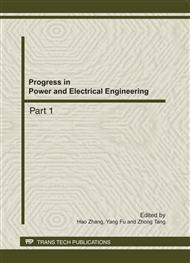p.216
p.222
p.226
p.231
p.236
p.240
p.246
p.251
p.256
Deposition of Chloride in Two-Phase Flow for the Superheater via Numerical Simulation
Abstract:
This paper reports the results of a study on the reason for chlorine-induced corrosion in the superheater, the factor of corrsion is caused by the chloride deposit. A three-dimensional model is performed in order to analyse chloride particles deposit in the flue-gas. The use of CFD codes for modeling of two-phase flow, it is important to know whether or not deposition will be present in some sensitive location. The RNG k-ε turbulence model and mixture model are employed in the article. The predicted results show that the volume fraction of particles phase varies along with the flow field. Chloride particles may deposit where the area of high volume fraction. Actually, under the condition of different velocity magnitude, the deposition of chloride particles is existed on the border of the baffle and at the bottom of the vessel.
Info:
Periodical:
Pages:
236-239
Citation:
Online since:
October 2011
Authors:
Price:
Сopyright:
© 2012 Trans Tech Publications Ltd. All Rights Reserved
Share:
Citation:


